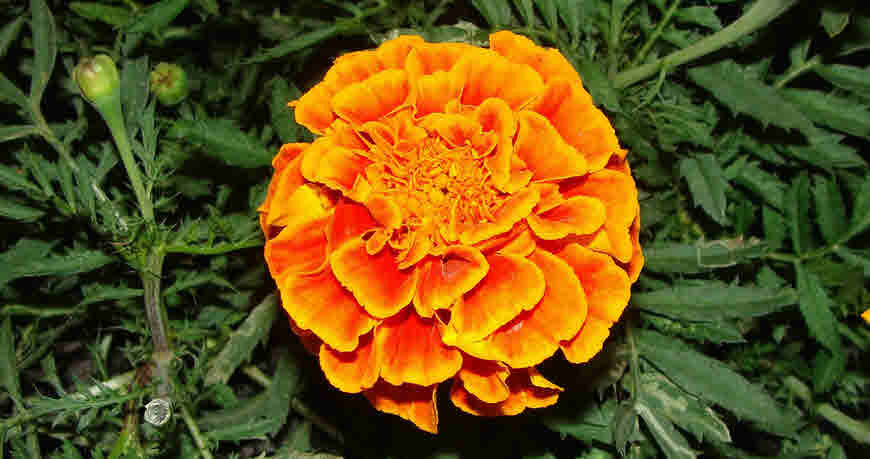Marigold or Genda is a very common ornamental herbaceous plant with long history of traditional medicinal uses. It is member of Asteraceae family. Marigold is a stout, branching annual herb. It is native of Mexico and other warmer parts of America and now naturalized in tropics and subtropics including India.

Overview
Kingdom: Plantae, Order: Asterales, Family: Asteraceae, Genus: Tagetes, Some common Tagetes Species:
Tagetes erecta (African or American Marigolds): Tagetes erecta plants are tall, erect-growing plants up to 3 feet in height. The flowers are globe-shaped, large and yellow to orange in color.
Tagetes patula (French Marigolds): Tagetes patula plant grow 5 inches to 18 inches high. The flowers are small and red, orange in color.
Tagetes minuta;Synonyms T. glandulifera (Mexican marigold): Tagetes minuta plant is of 50-150 cm height and has small flowers. It is also known as Stinking-Roger and gives highest yield of the essential oil.
Vernacular names of Marigold
- Bengali: Gaenda
- Gujarati: Guljhara, Makhanala
- Hindi: Genda
- Kannada: Seemeshamantige
- Marathi: Zendu
- Sanskrit: Sthulapuspha
- Tamil: Thuruksaamanthi, Tulukkasamandi
- Telugu: Bantichettu
Medicinal Properties of Marigold
Genda or Marigold flowers are astringent, carminative, and stomachic. The flowers contain tannins and phenolic compounds, steroids, terpenoids, flavanoids, saponins, alkaloids which give it therapeutic properties.
Flowers are said to purify blood and flower juice is given as a remedy for bleeding piles and also used in rheumatism, colds and bronchitis. These are also used for treating skin diseases, scabies, the liver complaints, and eye diseases.
The Flower has antibacterial properties and exhibit significant antibacterial activity against bacteria S.lutea, E.coli, B.circulence.
Marigold leaves have diuretic, antinociceptive (action or process of blocking the detection of a painful or injurious stimulus by sensory neurons), styptic (stops bleeding from wound, injuries) activities.
The leaves are traditionally used for treating kidney problems, swelling, muscular pain and are applied externally on boils and carbuncles. Infusion of leaves is used for managing rheumatism, cold and bronchitis.
In Unani medicine, sweet preparation made of tender leaves and purified sugar is prescribed in condition of no urine production, retention of urine and kidney problem.
The pounded leaves are applied externally on boils and carbuncles. The leaves are reported to have antioxidant, antifungal, analgesic activity and 18 active compounds, mainly terpenoids.
The leaves also exhibit antibacterial activity against various micro-organisms.
Marigold is an extremely effective herb for the treatment of the skin problems such as inflammation of the skin (due to infection, physical damage), ulceration, varicose veins, haemorrhoids, anal fissures, mastitis, sebaceous cysts, etc. It is also excellent remedy for treating sun burn. The stem sap is useful to remove warts, corns and calluses.